Volcano
Photograph from Hawaii and Indonesia
The first set of photographs was
taken at Kilauea, an active shield volcano on the Big Island of Hawaii. This
volcano is located over a hot spot, and is not located on a plate
boundary.
Shield volcanoes are the largest
type of volcano on Earth and in the Solar System. Kilauea is so large and its
slope is so gentle and gradual that many people visiting Volcano National Park
at its summit don't realize that they are standing on the volcano. Park
personnel say that people are always asking. "Where's the volcano?"
This first photograph taken near
the peak of Kilauea shows a former lava lake, now with a thick skin covering
the still-molten magma a short distance underneath. The wispy white spots on
the floor of the crater are places where steam and other volcanic gases are
emerging from the magma. Visitors can take a hike along a trail crossing the
lake surface.
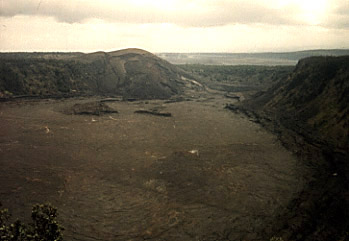
This photograph, taken from a
helicopter, shows the vent that was active in 1996.
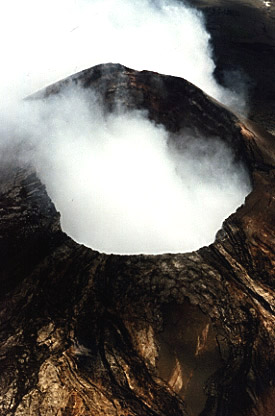
Lava flows have covered roads and
neighborhoods on the seaward side of Kilauea.

Trees are killed by being overrun
by a lava flow, of course, but often basalt casts of the tree trunks remain,
producing odd igneous fossils.
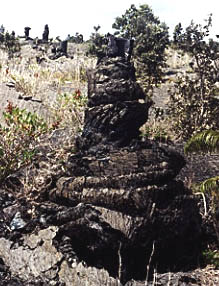
Eventually,
the lava flows into the sea, where it solidifies to form new, but very
unstable, land.
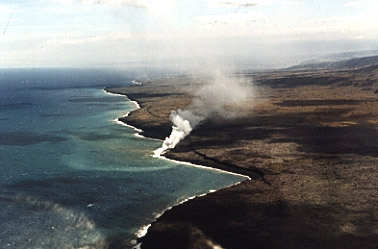
A lot of the lava flows underground
through lava tubes. Megaera, below, has her arm in a little lava tube, but the
tubes can be large enough to drive a truck through. Lava can remain molten and
flow tremendous distances when insulated by a lava tube. There is a small risk
of falling through active lava tubes and into the lava when walking across the
Kilauea lava field, one of the reasons why the lava field is off-limits to
visitors at Volcano National Park.
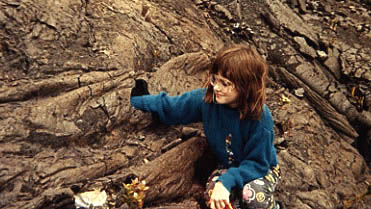
Lava also flows at the surface of
the volcano, where it can take one of two forms, aa or pahoehoe. In the
photograph below, an aa flow is in the background and a pahoehoe flow is in the
foreground. Aa is a blocky flow in which a thick skin forms on the surface of
the lava, breaking up into ragged chunks as the moten material moves
underneath. An advancing aa flow looks like a pile of incandescent red boulders
rolling over one another, as if pushed from behind by a hidden bulldozer.
Pahoehoe, or ropy lava, is a type
of flow in which the molten material pushes the thin skin into smooth, convoluted,
braided surface. Pahoehoe moves along fairly rapidly with viscous lobes oozing
over one another.
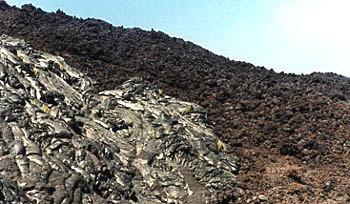
Shown below is the toe of a pahoehoe flow.
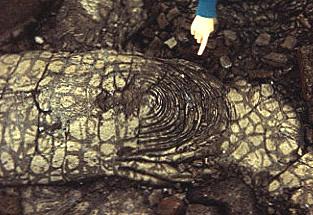
This is what the inside of a
pahoehoe lobe looks like. The holes, or vesicles, were created by gases trapped
in the solidifying lava.
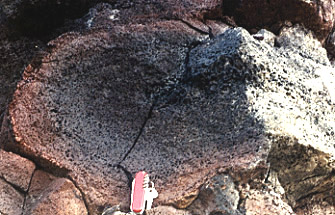
Beautiful pahoehoe, solidifying to
a dazzling silver color when fresh, creates a fascinating variety of forms:
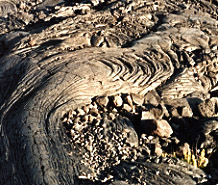

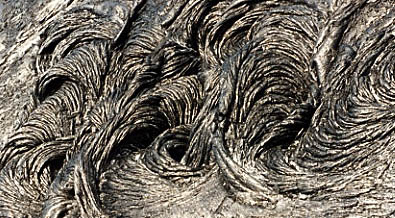
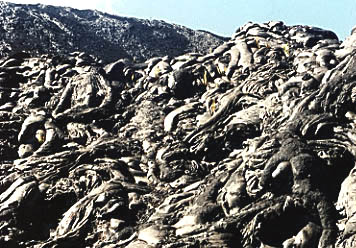


Whereas lava flows are the dominant
kind of eruption on a shield volcano, explosive eruptions can also occur,
producing layered tuffs as shown here. A large bomb can be seen in the middle
of the photograph.

Volcanic activity is accompanied by
faulting and earthquakes. Very often, an early sign of an impending eruption is
swelling of the ground over the rising magma, causing splitting of the
volcano's surface. Such a fault is shown below:
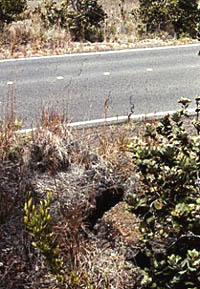
Magmas contain water vapor, carbon
dioxide, sulfur dioxide (and other sulfur gases, such as hydrogen sulfide) and
other irritating and dangerous fumes. On Hawaii, this material is called VOG
(volcanic smog) and is a local health hazard.

Noxious hot gases emerge from vents
all over Kilauea.
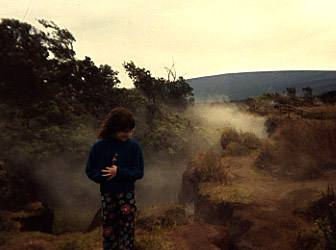
Elemental sulfur and other minerals
precipitate around the steam vents.
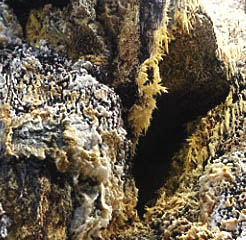
This second set of photos comes
from Mount Kelimutu on Flores Island in Indonesia. Indonesia is located along a
complex convergent plate boundary. Kelimutu is a stratovolcano that has blown
its top off, apparently several times, leaving behind a cluster of three
beautiful caldera lakes. Each of Kelimutu's lakes is a different color, and the
colors commonly change as circulation of water brings different materials to
the surface. Local myth makes the lakes of Kelimutu the resting place of souls,
with each lake being for a different group: one for children, one for
criminals, and one for everyone else.
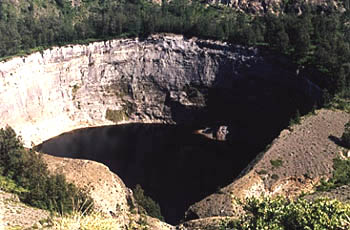
The yellow material in the lake in
the foreground below is sulfur. The lake is a concentrated sulfuric acid
solution. Students like to ask if it is possible to go into the lakes. The
answer is yes. But you can't get out again.

Brenna Lorenz